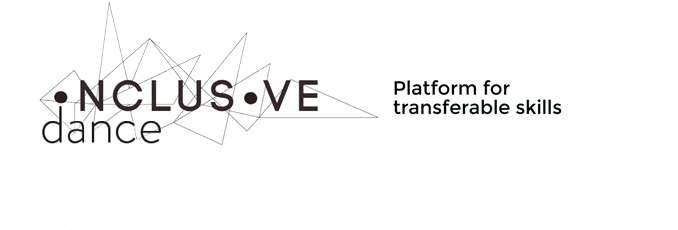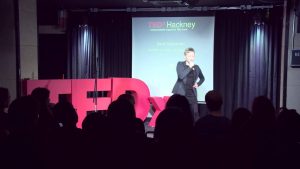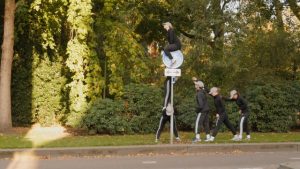by Katerina Dietzova
dancer, student of ergotherapy, leader of the classes for people with Parkinson’s in Karlovy Vary (CZ)
Darja studied at the Duncan Centre conservatory and within an exchange program she spent six months at Fontys Hogeschool voor de Kunsten. Nowadays she studies ergotherapy at Jan Evangelista Purkyně University in Ústí nad Labem dedicated to use of the free time of people with health disorders. I choose ergotherapy, because I would like to contribute to possibilities of making the movement/dance accessible to everybody.
For material of the dance classes I’m inspired by images of nature, different cultures and archetypal images. I’m fascinated by people and their stories, which are expressed in their faces, in their movement and into their interaction with life.
- What is your profession? How do you earn your living?
I studied dance, choreography and pedagogy on Duncan Centre conservatory in Prague where I graduated two years ago. Nowadays I’m a student of ergotherapy at Jan Evangelista Purkyně University in Ústí nad Labem.
- How did you get to the dance for Parkinson‘s classes?
I was contacted by Duncan Centre, if I would like to participate on a pilot program “Dancing with Parkinson”. I was very happy to join, because I was already looking for ways how to combine ergotherapy with dance.
- How did your view on dance change thanks to the work with people with Parkinson’s?
Yes, for sure. I’m again and again reassured, that dance can help, enrich and nurture every person, on the physical and psychical level.
- What is the sense/aim of dance for people with Parkinson?
The dance itself is the aim, the pure movement. People with Parkinson have troubles with automatic movement patterns, especially with walking. Thanks to the dance, music and voice guidance of the teacher the brain is involved in alternative way and the automatic stereotype pathways are broken. The result is free movement.
Another aim is way of self-expression of the dancer, which goes hand in hand with self-confidence, which leads back to freedom. During the classes I’m noticing there are many people dealing with their own version of fear and movement proposes a way how to set this process in motion. And last but not least the group aspect of these classes, where the dancers share the joy, the difficult times and the possibility of being together.
- How did you imagine your dance carrier before entering a dance school? What was so attractive on being a dancer?
Before I started studying at Duncan centre, I didn’t have much expectation or an exact idea how does such a carrier looks like. I didn’t think much about the future, unlike my parents who tried to talk me out of that idea of studying dance. Through dance I was realizing myself and other people in the group, sound and space. Dance was giving me confidence, that I can do something good and I can be support for myself.
- How did this image of future carrier evolved during your school years? Where did your education lead you?
During school years, one notices that it takes a lot of work, effort and time. Even though my body was going through some pain from time to time, I learned how to transform that and how to shift the boundaries. And by that I believe I was progressing in development as a dancer and as a human. Experiences from exchange study in Tilburg lead me to the idea of studying ergotherapy.
- Has anything shifted again thanks to classes for Parkinson’s?
I think I’m still following that original idea of dance I had: I enjoy observing in how many ways a person can transform through triggering his imagination and how every transformation is a reflection of his needs, skills and abilities.
- How does teaching dance classes for Parkinson’s fit within your profession? Is there something what you could “re-use” from you other teaching activities? Is the content of your classes for Parkinson’s or the way of leading it nurtured by your active profession as a dancer?
Leading the classes for people with Parkinson disease goes very well together with my future profession of ergotherapist. From the point of view of ergotherapy the dance classes are helping to increase the general quality of life, it’s having a beneficial influence on the person as a whole. While my study I’m taking only dance workshops and I don’t have much time for performing in projects. But for sure I’m taking inspiration from all my dance experiences and transforming them into forms, which I can use for classes with Parkinson or other disorders.






